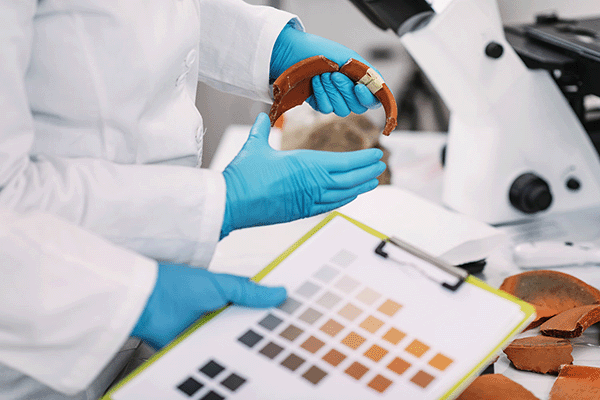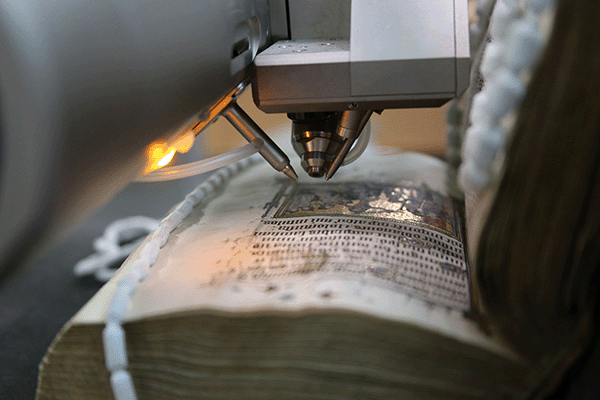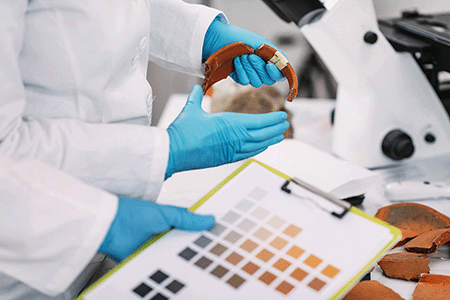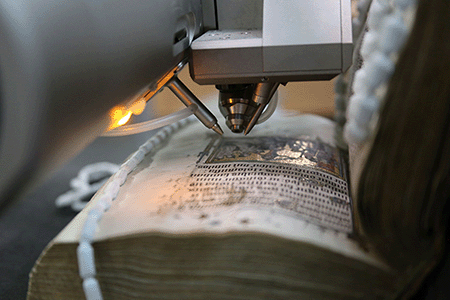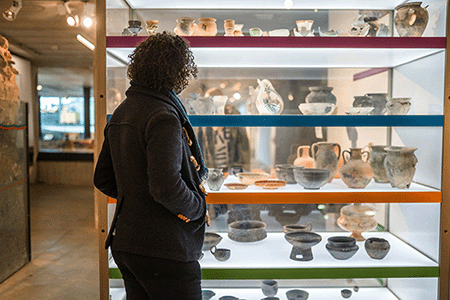The RICHeS team recently travelled north to the Orkney islands, to meet with the team delivering the RICHeS’ funded Archaeology and the Environment Science Facility (AEonS) investment, led by Professor Ingrid Mainland. AEonS aims to establish a comprehensive suite of fixed and mobile laboratories that will enable advanced processing and analysis of biological materials recovered from archaeological sites, ancient soils and sediments, enhancing research into past ecosystems, farming practices and human responses to environmental changes.
Expanding capacity for advanced analysis
AEonS will support the analysis of existing archaeological and modern reference collections at the University of the Highlands and Islands and Orkney Museums. These collections can provide valuable insights into how ancient communities lived, including the food they ate. Included in this investment is a new mobile environmental archaeology laboratory which includes refrigeration and sampling capabilities. Outreach will also be a part of this investment, offering on-site support to collaborators across Scotland and the UK.

This project is in collaboration with Historic Environment Scotland (HES), and the AEonS team will be holding joint outreach and training workshops to engage with more collaborators and to raise awareness of contemporary practices in environmental archaeology, such as sampling and analysis of archaeozoological, archaeobotanical and geomorphological materials.
The AEonS team hosted their first workshop at the HES Engine Shed in Stirling in October. At this workshop, stakeholders from across Scotland including community archaeologists and units, universities, museums and societies including Archaeology Scotland, the Society of Antiquaries of Scotland and the Chartered Institute for Archaeologists (CIfA) came together to discuss sector needs for environmental archaeology in Scotland and how AEonS and the RICHeS project more widely, could address these.
A Neolithic UNESCO World Heritage Site
During this visit, the RICHeS team visited the prehistoric landscape of the UNESCO World Heritage Site the Heart of Neolithic Orkney. Within this, Skara Brae village reveals the homes occupied by early farming communities 5000 years ago, in the best-preserved Neolithic settlement in Western Europe. We also visited the Ring of Brodgar, a stone circle and henge, a ritual monument that helps researchers further understand these historic communities. The AEonS facility on Orkney will enable new insights into our human past, its interactions with and influence on the surrounding environment at sites across the UK, further enhancing understanding of the history of the British Isles.
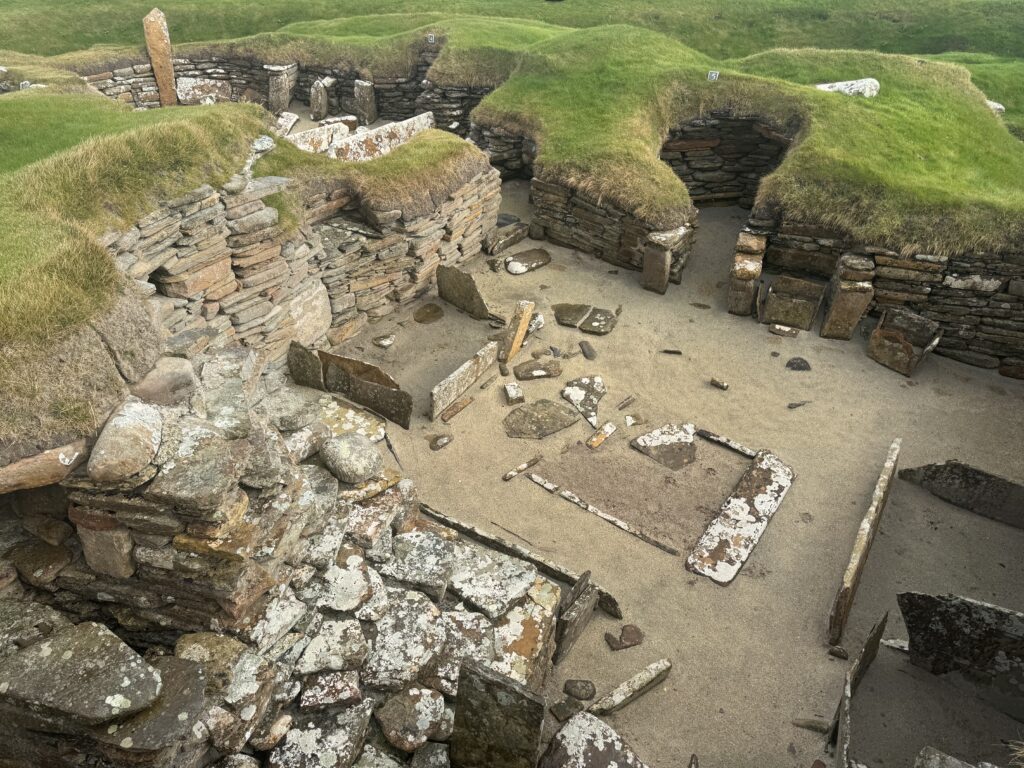
Professor Ingrid Mainland shares:
“Environmental archaeology is recognised as being an important discipline, not only in understanding the effects of natural environmental changes and human impact in the past but also in looking forward through researching subjects such as biodiversity change, sustainability, economic strategies, rewilding and future-proofing natural resources. Unfortunately, across the UK expertise and facilities for environmental archaeology research are diminishing. Gaps in capacity are emerging at national and regional scales particularly in specialisms, such as soil science, zooarchaeology and archaeobotany, which may lead to generational gaps in these specialisms and a national inability to take such research forward in the future. The AEonS facility and partnership has been established to meet these needs and ensure that skills gaps and shortages are met to provide a sustainable future for Scotland in Environmental Archaeology.”

